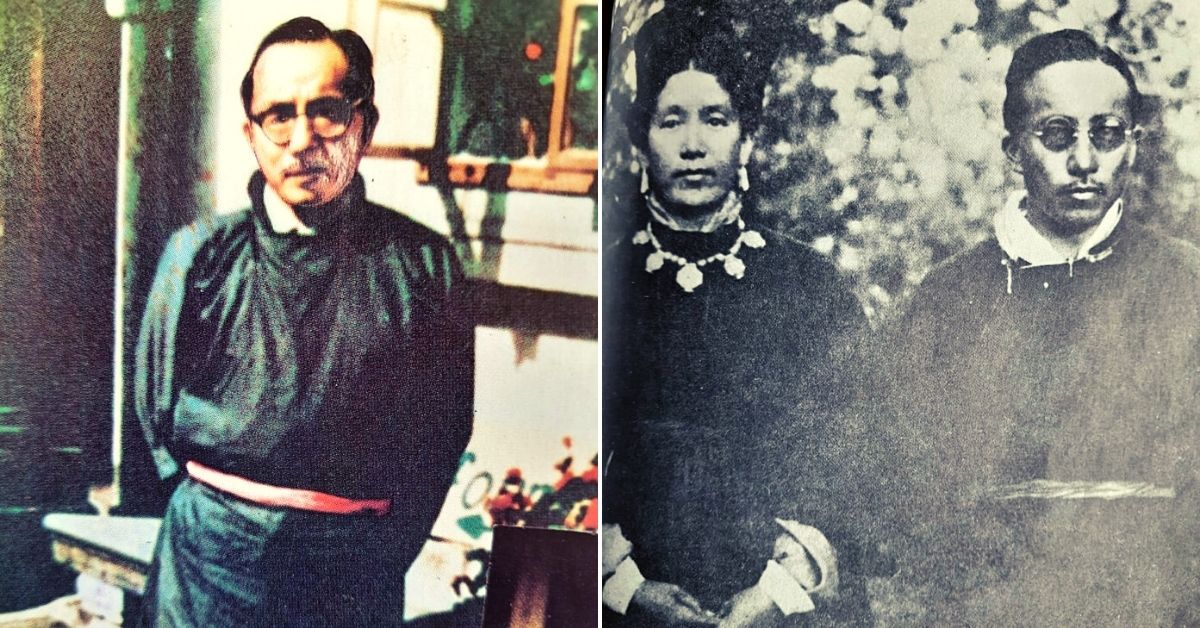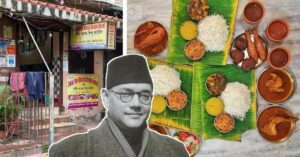Tsetan Phuntsog: Unsung Ladakhi Who Helped Save Nubra Valley From Pakistani Raiders
Coming from an aristocratic Ladakh family, Eliyah Tsetan Phuntsog worked closely with the Indian armed forces to ward off Pakistani raiders from Nubra in 1948, helped Tibetan refugees find land for a settlement in 1960s, and opened a school for their children.

When raiders from Pakistan attacked Ladakh in 1948, many local civilians played crucial roles in ensuring the region remained part of Indian territory against all odds.
There were people like Colonel Chhewang Rinchen (two-time Mahavir Chakra awardee), the 19th Kushok Bakula Rinpoche, Sonam Norbu, and countless other Ladakhi workers, volunteers and families whose contributions to the cause of India should never be forgotten.
Another such figure in this regard, lesser known in the pages of history, is Eliyah Tsetan Phuntsog, a civil officer posted in Nubra, who according to Colonel Thakur Pithi Chand MVC of the 2nd Dogra Battalion, not only played a pivotal role in providing supplies, transport and porters and gathering volunteers to fight alongside his troops, but also kept the morale of the local civilians high in times of peril.
Following his stint in government service, Tsetan Phuntsog founded a school for Tibetan refugee children at Rajpur, near Dehradun, at a time when they had very few facilities. Here’s his story.
(Above images of Eliyah Tsetan Phuntsog and his wife Sungkil courtesy Rev. Elijah Spalbar Gergan)
Born into privilege
Born in 1908 in Saboo village, Tsetan Phuntsog had a very privileged upbringing. Coming from an aristocratic family, which in the past had produced Kalons (ministers) for the King of Ladakh, his father was among the chief lay disciples of the renowned Rizong Monastery.
According to this academic paper, authored by scholar John Bray, Tsetan Phuntsog was studying in Rizong Monastery to become a Buddhist monk, when his father tragically passed away at the age of 40. Since he was the only son, his relatives applied pressure on Phuntsog to quit his monastic studies and manage the family property. That’s what he eventually did.
He would soon get married and enlist in the Kashmir government service under the rule of Maharaja Hari Singh, the ruler who would go on to sign the Instrument of Accession in 1947.
Despite joining government service, Phuntsog didn’t lose touch with Buddhist studies and was well regarded for his knowledge of religious texts. However, his life would change dramatically upon meeting with Joseph Gergan — a Ladakhi Christian scholar from Nubra who would go on to pen the Bible in Tibetan — in the late 1920s and fall in love with his daughter, Sungkil.
“He [Phuntsog] had, by now, parted from his first wife, but Gergan would not allow the marriage to take place unless his would-be son-in-law were formally baptised. Tsetan Phuntsog’s baptism finally went ahead in September 1934, when he took on the Christian name Eliyah, and he married Sungkil the following year,” writes John Bray.
His decision to convert angered the larger Buddhist community, with his own family disinheriting him from their property. Going further, he was falsely accused by a local tehsildar for stealing Rs 26 from the Kashmir government, and thrown into prison. Fortunately, he was soon released after the charges were proven false and returned to government service in 1940.
After resuming work, Phuntsog was often sent to Tibet on various assignments like investigating crimes or negotiating tax arrangements or border conflicts with Tibetan authorities. Life in government service for the next few years was largely uneventful until the early months of 1948.

Tribal Raiders Attack
In late 1947, Skardu came under attack from Pakistani raiders who were claiming the region for their newly-formed government in Islamabad following Maharaja Hari Singh’s decision to sign the Instrument of Accession with India. Although Indian soldiers fought bravely, a series of strategic blunders left them shorthanded, and by August 1948, they had surrendered.
Phuntsog, who was posted in Skardu, had managed to escape ahead of the raiders, and found his way to Ladakh, where he worked as a supply officer for the Indian Army. With Indian forces struggling to hold onto Skardu, the raiders from Pakistan pushed on with their audacious operation to seize the entire Baltistan-Ladakh region.
As Colonel (then Major) Prithi Chand notes, “In 1948, I was sent to Leh to raise a Civil Force and train them to defend Ladakh. I had only fourteen men with me and there was a platoon of State Force at Leh. On my arrival, I contacted the people and requested that they provide young men to be trained in the use of arms. Around 200 men volunteered and their training started…The raiders from Pakistan could enter from [Nubra], so my first priority to defend Ladakh was to send some troops there and seal the entrance to this valley. I led a platoon of State Force via Changla [18,300 ft.] on the 23rd of March 1948 where along with volunteers. I set up our forces to stop the infiltration of the raiders.”
At the time, Phuntsog was a Civil Officer posted in Nubra Valley. Major Chand requested him to provide “supplies, transport and porters for my troops until the time I could arrange for the same from Leh.” He was also part of an impromptu War Council formed by Major Chand for Nubra, who was the chief administrator. The other members of this council were Kalon Tsewang Namgyal, President of Ladakh Buddhist Association, who was made in charge of Home Affairs, Rigzin Namgail Lonpo (Defence), Stanzin Tsering and Dr Mary Driver (Health), among others.
“This was an emergent arrangement when Ladakh was almost surrounded by Pakistanis upto Taru Thang, and Nubra was almost being considered a lost territory by Lt.Col. Prithi Chand. His main attention was to save Leh. Some reports said that the enemy was sighted 6 miles from Leh. Eliyah Tsetan Phuntsog was the Chief Civil Force organiser of Nubra operations in close coordination with Prithi Chand, a highly popular officer who often shunted between the war front and villages to maintain supply and coordination,” says Rev. Elijah Spalbar Gergan, a renowned educationist and relative of Phuntsog, in a conversation with The Better India.
Phuntsog managed to obtain all the assistance Chand needed from the local populace. In fact, he also acted as a guarantor for gallant volunteers like Chewang Rinchen along with Kalon Chewang Rigzin for the provision of firearms and ammunition. “Before his guarantee, Prithi Chand was reluctant to provide such equipment to a Civil Force called the Nubra Guards,” says Rev. Gergan.
Also, as Chand noted in his writings, “our troops in the valley got everything they wanted.” The Indian troops were engaged in fighting in Nubra Valley till December 1948.
“Throughout this operation Gaga (Kaga/elder brother in Ladakhi) Thsetan Phuntsog gave all assistance to the troops. He himself used to stay in the front looking after the demands of the jawans, he provided volunteers to fight and indeed he not only kept the morale of the civilians but also of the soldiers at the front. Today, one would see him in the front and next day he would be found making arrangements for the provisions, transport and porters. His intelligence helped us get information about the raiders and helped us to counter the propaganda of the enemy. Our success in the Valley was due to the cooperation we received from persons like Gaga Thsetan Phuntsog who especially helped in keeping the civilian morale high,” said Chand.
Life After War
Following the ceasefire, Phuntsog was appointed Leh’s first tehsildar in independent India. Unfortunately, he soon ran into opposition because of communal politics, and eventually resigned from the post in 1950, according to John Bray. For a brief period, he became an Information Officer before retiring from government service altogether.
Following his retirement from government service, he served as a full-time missionary along with two European couples until 1956, when “the Indian government withdrew permission for foreign missionaries to work in the region.” The same year he was ordained a Christian minister.
Three years later in 1959, he moved to Mussoorie, where he began work on revising the Tibetan version of the New Testament. As coincidence would have it, in March 1959, HH the 14th Dalai Lama escaped Tibet and landed in India, alongside many other Tibetan refugees. Seeing their desperate plight after escaping the horrors of the Communist Party of China (CPC), Phuntsog became extensively involved in relief work with a group from Amdo, Tibet.
“He would go on to help Tibetan refugees find land for a settlement at Clement Town near Dehradun working alongside the likes of Acharya Vinobha Bhave, a renowned social activist and Gandhian,” claims Zhidey Kundan, his daughter and an educationist, speaking to The Better India.
Credit for this, however, primarily goes to Acharya Vinobha Bhave, who generously donated about 100 acres of land to Gungthan Tsultrim, the Founder and Chairman of Amdo Dance and Drama Troupe. This was a gift mainly to rehabilitate Tibetan Refugees under the Bhoodan movement (land gift movement) scheme in 1964.
In 1963, he even founded a school for Tibetan refugee children at Rajpur, which is also near Dehradun at the request of a few Tibetan refugees he had met. Initially, Rev. Phuntsog had started literacy classes for adults and a day school for children, but as the number of children kept increasing, he had no choice, but to open boarding facilities as well in 1965. Today, the Moravian Institute is a full-fledged school up to Class 12 affiliated with the ICSE board.

Sadly, he passed away only eight years later in 1973 but leaves behind a remarkable legacy. As Chand noted, “In Ladakh, I found Gaga Thsetan Phuntsog the most learned and active man. Later I met him in Rajpur and I was very proud to see that he had established a school for poor and Tibetan refugee children. His untimely death was a great loss to many poor people. To me, he was a sincere friend who had dedicated his life to the service of the poor.”
Sources:
For the Col. Thakur Prithi Chand quotes: Yarked (25th anniversary souvenir of the Moravian Institute, Rajpur. Published privately in Dehradun, 1988)- No online copy available.
Tibet Studies: Proceedings of the 6th Seminar of the International Association for Tibetan Studies, Volume 1, The Institute of Comparative Research in Human Culture Oslo, 1994
Major Thakur Prithi Chand — The fearless Dogra from Lahaul (The Tribune)
(Edited by Divya Sethu)
Like this story? Or have something to share? Write to us: [email protected], or connect with us on Facebook and Twitter.

Similar Story

Netaji Bose’s Favourite Eatery Has Been Serving Traditional Delicacies for Over 100 Years
The Swadhin Bharat Hindu Hotel in Kolkata, started by Mangobindo Panda, is a century-old pice hotel where Indian freedom fighters like Netaji Subhas Chandra Bose would enjoy Bengali delicacies.
Read more >
If you found our stories insightful, informative, or even just enjoyable, we invite you to consider making a voluntary payment to support the work we do at The Better India. Your contribution helps us continue producing quality content that educates, inspires, and drives positive change.
Choose one of the payment options below for your contribution-
By paying for the stories you value, you directly contribute to sustaining our efforts focused on making a difference in the world. Together, let's ensure that impactful stories continue to be told and shared, enriching lives and communities alike.
Thank you for your support. Here are some frequently asked questions you might find helpful to know why you are contributing?


This story made me
-
97
-
121
-
89
-
167












